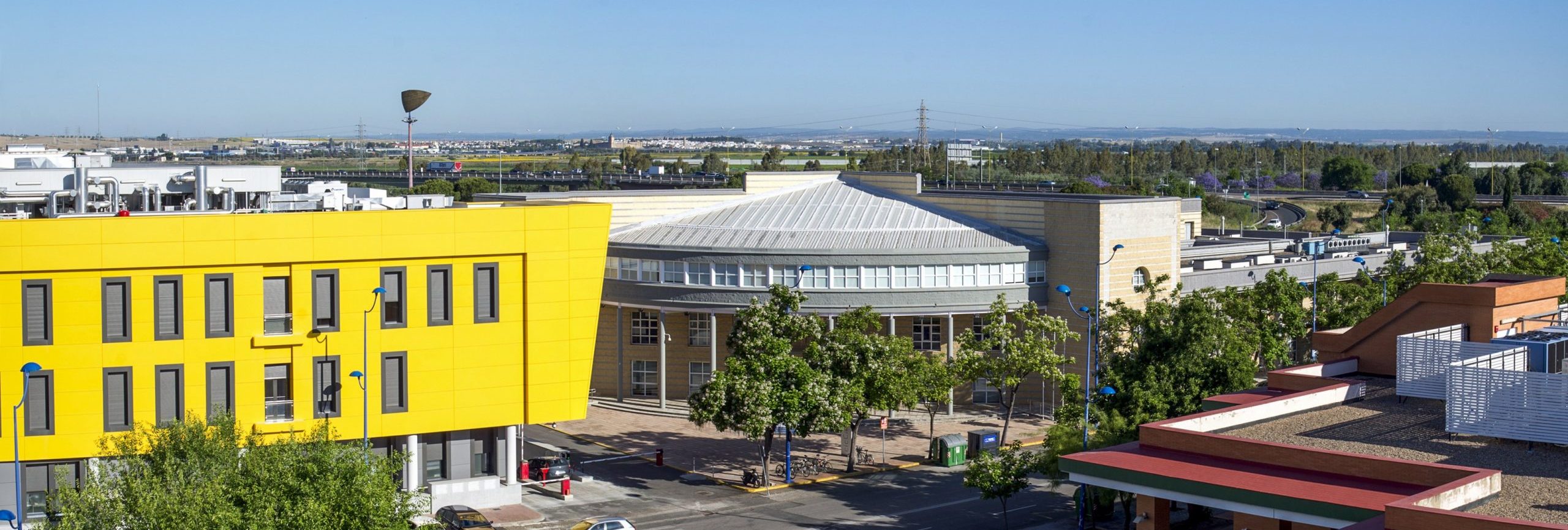About us
Introduction
The Institute of Plant Biochemistry and Photosynthesis (IBVF) is a Joint Centre of the University of Seville (USE) and the Spanish National Research Council (CSIC). The IBVF is specialised in the study of phototrophic biology in a broad sense, with the distinctive feature of developing research with all types of oxygenic photosynthetic organisms: cyanobacteria, algae and plants. Photosynthesis, the process that uses light energy and water for the primary production of organic matter and oxygen, is essential for life on Earth. The IBVF research is connected with business sectors related to agri-food, specifically the use of photosynthetic microorganisms as biofertilisers and the biostimulation of plant growth, as well as the use of microalgae in processes of sequestering of greenhouse gases from the atmosphere and as biofactories for the production of compounds of industrial interest. The growing social concern about the adverse effects of global warming, mainly caused by the accumulation of greenhouse gases such as CO2, increases the social usefulness of the research in phototrophic biology carried out at the IBVF.

History
The IBVF has almost 60 years of history. The beginnings of the Institute date back to 1967, when Prof. Manuel Losada moved to the USE to be Professor of Physiological Chemistry. Originally, what is now the IBVF already arose from the close collaboration between CSIC and USE, even before the figure of a joint centre as we know it today existed. In fact, the agreement to create the IBVF Joint Centre was signed in 1986.
In the beginnings of its research, the Department focused on the study of the photosynthetic assimilation of nitrogen, the main limiting element in agricultural production. These early studies made it possible to establish the molecular basis of the reduction of the oxidised forms of nitrogen (nitrate and nitrite) to ammonium, both in plant leaves and in green algae and cyanobacteria. The work of this first phase culminated in the demonstration that the photosynthetic reduction of nitrate in cyanobacteria uses water as a reductant, as described in a paper published in Nature in 1976. The prestigious awarding in 1995 of the Prince of Asturias Prize for Technical and Scientific Research to Prof. Losada for “his pioneering and essential research on the photosynthetic assimilation of nitrogen, a fundamental key to the development of life”, was the confirmation of the IBVF’s international leadership position in photosynthetic nitrogen metabolism, as well as the extraordinary recognition of Losada’s scientific career and, therefore, of that of the IBVF.
From the 1980s onwards, the IBVF adopted new molecular biology techniques, complementing the Institute’s classical biochemical approaches. At the same time, applied research projects were initiated, exploring the possibility of using cyanobacteria and algae for the photoproduction of ammonium, hydrogen or hydrogen peroxide, and the production of biomass and compounds of industrial interest. Finally, the possibility of genetic transformation of plants began to be established in these years, which broadened the Institute’s research topics towards plant biology.
In 1996, the IBVF moved to the Centro de Investigaciones Científicas Isla de la Cartuja (cicCartuja), where it shares facilities with two other CSIC-USE Joint Centres, the Instituto de Investigaciones Químicas (IIQ) and the Instituto de Ciencia de Materiales de Sevilla (ICMS). The transfer of the IBVF to cicCartuja allowed it to grow in an orderly fashion, both in terms of research and administrative staff and in terms of support facilities.
The IBVF today
The IBVF is a modern research centre, well-appointed both with basic and specialized methodologies of biochemistry and molecular biology, and focused in the study of phototrophic biology. The interest in the biology of phototrophic organisms is currently increasing due to the growing concern generated by the adverse effects of climate change. This situation opens up new challenges for research in photosynthesis, in which the scientific potential of the IBVF must contribute to providing answers to a top-level social demand. To this end, the commitment to excellence that has guided the IBVF’s scientific activity since its origins is combined with a greater effort in applied science, allowing for increased collaboration with the business sectors of agri-food and microalgae biotechnology, which are of great importance in Andalusia. The recruitment of young talent is essential to face this new stage. In recent years, young researchers have joined the IBVF through highly competitive programmes, such as the MSCA (Marie Sklodovska Curie Actions) of the European Union, JIN-type projects of the National Plan, Ramón y Cajal contracts and the ComFuturo projects of the CSIC, among others. The scientific potential of the IBVF must be used to successfully face the challenges posed, in which the biology of photosynthetic organisms must play a fundamental role.
As a USE-CSIC joint centre, the IBVF currently employs between 110-120 researchers. The components of the Institute are distributed into 14 Research Groups and General Services. The IBVF has 6 Scientific-Technical Services (SCT): Advanced Microscopy, Chromatography, Protein Analysis, Greenhouse Facility, Photosynthetic Analysis and Biological Cultures. In addition to the specific equipment of these Services, the IBVF has equipment for general use, in particular excellent facilities for the cultivation of bacteria, algae and plants.
Through their scientific activity, the Research Groups intend to advance in the understanding of the general principles that can be applied to phototrophy in diverse organisms and to explain how basic phototrophic metabolism can support biological systems apparently as distant as cyanobacteria, algae and plants. The research carried out at IBVF has a strong component of basic research, but it is also involved in applied research and always considers the possible applications of the most innovative research. Finally, the IBVF has a clear training role, with a key objective in the training of new researchers. IBVF’s research activity has always been linked to its teaching function, which translates into an intense activity of supervision of undergraduate and Master’s students and, above all, in the training of more than 200 PhDs throughout its history.


